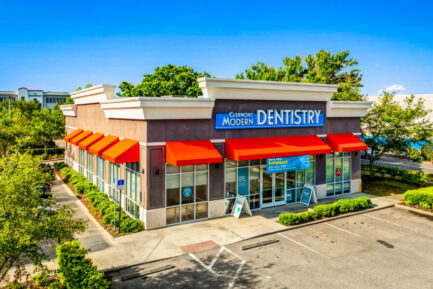The newly passed One Big Beautiful Bill Act (OBBBA) restores one of commercial real estate’s most powerful tax tools: 100% bonus depreciation, now extended through 2029. For owners, operators, and investors, this can create meaningful opportunities to boost cash flow, improve after-tax returns, and unlock capital for reinvestment.
Here’s how bonus depreciation works, what qualifies, who it really helps, and what you should do next.
What is Bonus Depreciation?
First, the basics: most commercial buildings are depreciated over 39 years under IRS rules — covering the base structure like the foundation, roof, walls, windows, and vertical transportation. But not everything inside a building has the same useful life. Tangible assets like fixtures, equipment, and even certain improvements wear out more quickly. Accordingly, the IRS code allows certain assets to benefit from an accelerated depreciation schedule. Specifically:
- 5–7 years for tangible personal property (flooring, cabinets, specialty plumbing, electric, furniture).
- 15 years for land improvements (parking lots, sidewalks, landscaping, etc).
- Note: Land itself is not depreciable.
Bonus depreciation takes this a step further. Under the new provision, if an asset has a useful life of 20 years or less, you can now deduct 100% of its cost in the same year it is placed in service — instead of depreciating over the full useful life.
In addition to the asset meeting the 20-year useful life criteria, the following must also be true about the asset:
- It must be new to you — you can’t claim bonus depreciation on an asset you or a related party already used.
- It must be tangible personal property — physically touchable and movable.
- It must be placed in service — meaning ready and available for its intended use — after January 19, 2025.
The result? A big upfront tax shield.
Fundamentally, bonus depreciation allows investors to front-load deductions and reduce taxable income, improving cash flow during the hold period. The improved cash flow frees up more dollars to reinvest in the next property or upgrade.
When it’s time to sell, using a 1031 exchange to defer capital gains tax allows those untaxed dollars to roll directly into the next property. Combined, these tools create a repeatable cycle for portfolio growth: reposition, reclassify, depreciate, and reinvest.
How Do You Unlock Bonus Depreciation?
Some asset classes – like automotive repair and service, car washes, and gas stations – have special depreciation schedules for the entire property that meet the 20-year threshold for bonus depreciation. For most properties, though, the unlock is cost segregation – a specialized tax strategy that breaks down a property into individual parts and reclassifies them from the standard 39-year life (where eligible).
“The best place to start is with a qualified tax professional,” advises Clifton McCrory, Vice President – Investment Advisor at SIG. “You want to be buttoned up in your cost segregation and analysis: break down and reclassify the qualifying parts, accelerate recovery periods, and pull all that depreciation forward to the first year. It’s the lever that makes your real estate work harder.”
Consider a medical office building scenario. The building is depreciated on a 39-year schedule. With a cost segregation study, the tangible assets within could be broken out as follows:
- MRI and X-ray equipment (5-year)
- Specialized electrical and plumbing (5–7 years)
- Parking lots and walkways (15-year)
Rather than depreciating everything straight-line for 39 years, these assets now meet the 20-year threshold and can take advantage of 100% depreciation in the first year.
Which Assets Can Benefit Most From Bonus Depreciation?
Bonus depreciation doesn’t impact every asset type equally. It’s most powerful in asset classes with heavy equipment costs, constant upgrades, or short-life assets.
Property types that stand to benefit the most:
🚘 Automotive: Automotive service centers and repair shops often contain significant qualifying equipment — lifts, diagnostic machinery, tools, and specialized systems — that can be depreciated much faster through cost segregation and bonus depreciation. For owner-operators or investors in net-leased auto assets, this can create meaningful upfront tax savings and strengthen overall cash flow in the early hold years.
🫧 Car Washes: An exception to the 39-year schedule — car washes have a 15-year useful life, so the entire asset (if new and placed in service) could be depreciated in year one. This asset type is essentially a mechanical business with a building wrapped around the equipment. Most value sits in the wash tunnels, dryers, conveyors, vacuums, and water reclamation — all commonly qualifying for short-life treatment through cost segregation.
⛽ Gas Stations, Truck Stops & Travel Centers: Gas pumps, canopies, signage, and car wash add-ons can qualify for bonus depreciation. Note, gas stations must earn at least 50% of revenue from petroleum sales to claim the full benefit.
🏥 Medical Office Buildings (MOBs): Specialized medical equipment, tenant improvements, and built-in systems often qualify. Converting retail or office space to medical use creates major reclassification opportunities – known as Qualified Improvement Property (QIP).
💲Retail: QSRs, retail pharmacies, and convenience stores are often overlooked but rich with reclassifiable assets — on average, 20–60% of tangible assets can be reclassified for faster depreciation.
The Impact of Bonus Depreciation
The buzz around bonus depreciation is well placed; it is a lever that, when layered with other provisions, can dramatically increase upside for investors who are proactive and thoughtful.
“Bonus depreciation will speed up the market,” advises Tyler Ellinger, Vice President – Investment Advisor at SIG. “Expect capital to move faster and car wash, c-store, and travel center deal volume to pick up as investors sharpen their tax strategies. Cap rates will compress as more buyers run numbers that factor in the full 100% depreciation benefit.”
Investors across the spectrum of commercial real estate stand to benefit:
- Net-Lease Investors: Use cost segregation to accelerate depreciation on qualifying building expenditures, especially when tenant improvement allowances or build-to-suit features are part of the lease terms.
- Family Offices and Private Investors: Use bonus depreciation to offset the high tax liability associated with high income or a sudden windfall.
- Owner-User / Operator: If you occupy your real estate (like a car wash, travel center, or auto shop) and haven’t yet leveraged cost segregation or recent improvements, bonus depreciation can directly improve your cash flow by accelerating deductions on qualifying assets.
- Developers: More upfront deductions improve project returns and can help with investor recruitment.
- Syndicators: Can market improved IRRs thanks to faster tax benefits.
Practical Steps from SIG Experts
If you’re active in these spaces — or want to be — now’s the time to get clear on what qualifies, what doesn’t, and how you can optimize.
Consider the following recommendations to maximize your investment opportunity:
- Timing matters: Bonus depreciation is only applied in the year assets are placed in service; timing your closing, construction, and improvements matters. Cost segregation studies can take 30 to 60 days.
- Coordinate with your CPA: Not all states conform to federal bonus depreciation rules. Some may partially limit your benefit. Confirm before you close.
And perhaps most importantly: work with qualified partners.
Bonus depreciation can be a powerful tool, but it comes with nuances — from finding the right property, to structuring improvements, to timing your hold and planning for recapture. This is not the time to skimp on due diligence.
Your Next Move
Sands Investment Group advisors partner with trusted tax and cost segregation specialists to help clients:
- Optimize cost segregation timing
- Time deals and renovations properly
- Execute sale-leaseback or 1031 strategies
- Maximize returns while staying compliant
- Ensure due diligence and documentation for audit-proof compliance
Ready to put your capital to work? Request a Consultation or Explore Market-Leading Inventory
IMPORTANT INFORMATION
Sands Investment Group and its affiliates do not practice law and do not give legal, tax, or accounting advice. The information contained herein is for informational purposes only and is not intended to provide, and should not be relied on for legal, tax, or accounting advice. Investors should consult their own legal, tax, and accounting advisors before making any financial decisions. We are always available to collaborate with you and your trusted advisors as you plan your next steps.











